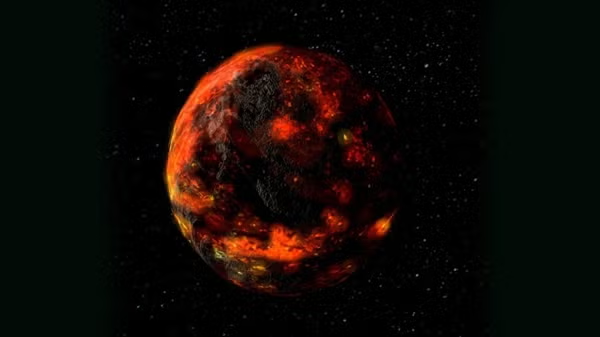After the gold rush of the 1850s, the Sierra Nevada foothills in California looked like giant moles had attacked. Thousands of mine shafts pocked the landscape. Hydraulic mining devoured hillsides and sent tons of silt into rivers and lakes. Forests went under the axe, denuding hillsides. Millions of pounds of mercury were used to leach gold from ore. To this day, it’s unsafe to eat fish caught in certain areas.
This is exactly what space officials want to prevent when we begin to colonize the moon in a few years.
That was the topic of “Planetary Protection and Lunar Activities,” a panel discussion held Thursday and co-hosted by Arizona State University’s Interplanetary Initiative.
“We’re moving very, very rapidly,” NASA Administrator Jim Bridenstine said. “The key is keeping a pristine environment.”
The salon was part of the Moon DialogsThe project is a collaboration between Open Lunar Foundation, Secure World Foundation, the MIT Space Exploration Initiative, Arizona State University's Interplanetary Initiative and For All Moonkind. series, which seek to cultivate thought leadership on lunar surface coordination mechanisms to accelerate a peaceful and sustained presence on the moon.
Planetary protection is the protection of space and celestial bodies from contamination from terrestrial life forms (or from bringing back anything nasty to Earth; we’ve all seen the movies.)
The discovery of hundreds of millions of tons of water ice on the moon a few years ago changed everything. NASA is changing its thinking on how to go to the moon. “Forward biological contamination” is what they want to prevent.
“With Mars we have to worry about backward contamination as well,” Bridenstine said. “All of a sudden it becomes more challenging to go to Mars with humans. … We as an agency need to strike a balance.”
Humans need to go to Mars, but the planet must also be protected for scientific research. It would be a huge disappointment to go there and discover life, only to realize it hitched a ride from Earth.
“As we learn more, we’re going to have to continue to make adjustments,” Bridenstine said.
The moon will be divided into two categories, he said. Category One will have very little requirements on contamination. That will cover most of the moon.
Category Two will cover certain areas, namely the permanently shadowed regions — basically the poles — with lots of water ice that need to be protected. You can go there, but you have to be really careful to inventory all the biology that will be going along, including on the spacecraft.
There needs to be a balance between commercial, science, and human exploration needs in space. Mars “is a world where we all need to be working together to achieve the best outcomes,” Bridenstine said. We simply don’t have enough information on either Mars or the moon to know where we can go and can’t.
Space becomes developed by legal structures that provide certainty, Bridenstine said. “What we don’t want to do is create uncertainty.”
Mike Gold is the NASA acting associate administrator for the Office of International and Interagency Relations.
“Precedent is important, and we have to establish the right precedent,” Gold said.
There is no weathering on the moon. Unlike a beach where the ocean wipes away the day’s footprints, any scar will last forever. Scars from Gen. Patton’s tanks still mar the Mojave desert where they trained for World War II 80 years ago. And what about protection from garbage and debris?
“We really have to stretch our imaginations,” said panelist Lindy Elkins-Tanton, planetary scientist, principal investigator on the Psyche mission and managing director of ASU’s Interplanetary Initiative.
“What if there’s evidence of life on the moon?” Elkins-Tanton said.
We don’t know how life arose in this one spot — Earth. It may have arisen on a body like the moon. The precursors of life may be hidden on the lunar surface. All the more reason to protect it.
Top image: Central peak complex of Bhabha crater (70 kilometer diameter) rising from the shadows of dawn, image snapped on Aug. 28, 2019, from an altitude of 73 kilometers. View is seen from east-to-west, north is to the right, visible portion of central peak complex is about 14 kilometers wide, NAC M1321101374LR Courtesy NASA/GSFC/Lunar Reconaissance Orbiter /Arizona State University.
More Science and technology

Compact X-ray laser lab aims to reveal deep secrets of life, matter and energy
X-rays allow us to view inside the human body to diagnose broken bones and other hidden problems. More recent X-ray advances are making it possible to see events at the scale of atoms and molecules,…

Apollo lunar samples enable ASU researcher to pinpoint moon’s crystallization timeline
A team of researchers, including Arizona State University geochemist Melanie Barboni, in collaboration with scientists from The University of Chicago, have made a new discovery about the history of…

NASA launches space telescope to chart the sky and millions of galaxies
California’s Vandenberg Space Force Base was the site for Tuesday’s 8:10 p.m. launch of the NASA SPHEREx mission aboard a SpaceX Falcon 9 rocket.The SPHEREx (Spectro-Photometer for the History of the…


